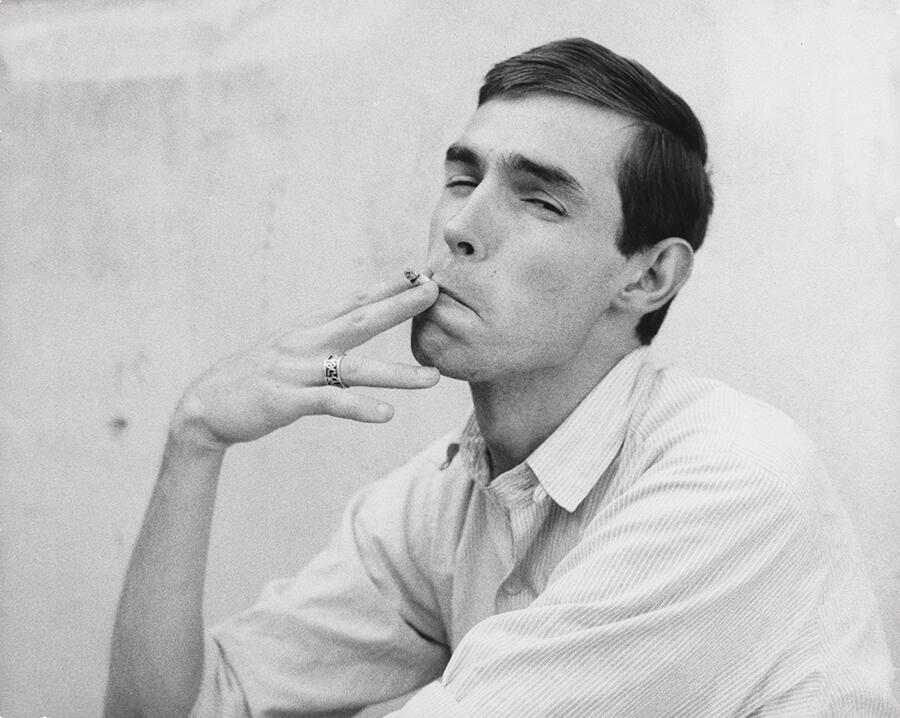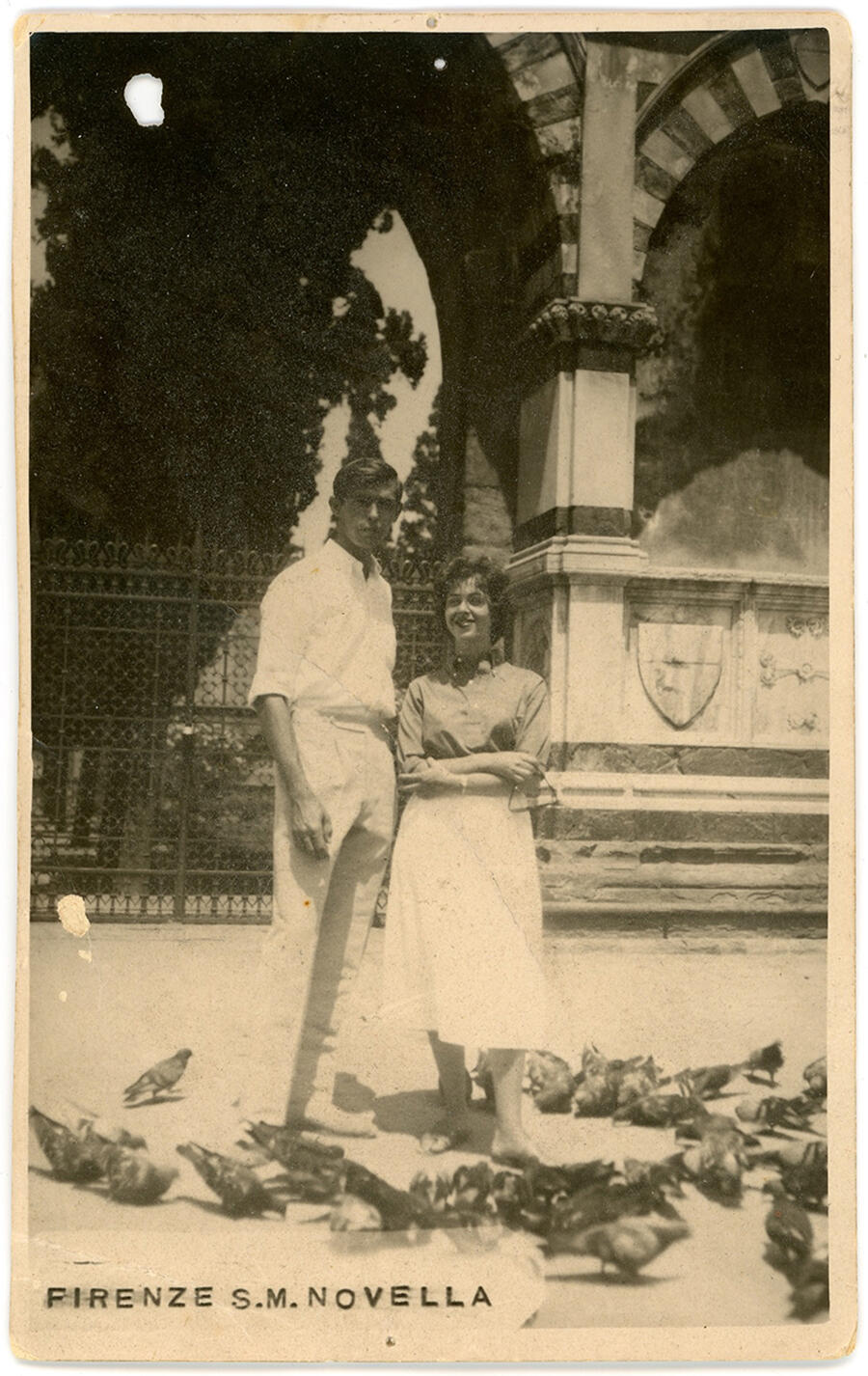What It Was Like When Peter Hujar Took Your Photograph
Linda Rosenkrantz remembers the decades of friendship she had with the photographer
Linda Rosenkrantz remembers the decades of friendship she had with the photographer

Only recently it occurred to me that, in the five decades of our friendship, Peter Hujar (1934–87) recorded all the major events and people of my life. He photographed me in his various studios and in our individual apartments on New York’s Upper West Side, as well as in Central Park, Times Square, Oakleyville on Fire Island, Woodstock and Italy – Florence, Rome, Taormina. He shot the author photo for my first book, Talk (1968), my art-world tribe, my ‘engagement’, my wedding, my mother and me, my young sister and me, my daughter at the age of six. He photographed my legs for a shoe advertisement and even hypnotized me back to adolescence for the cover of a sociology book on teens he was hired to shoot.
I met Peter in 1956, soon after he had moved in with one of my closest confidantes, the painter Joseph Raffael – then known as Joe Raffaele. We almost immediately became something of a threesome. I would come to their plant-filled apartment in the West 90s, straight from my job at an auction house (or a therapy session), where they would cook pork-chop dinners and we would gossip to the music of Henry Purcell’s Dido and Aeneas (1689) or Samuel Barber’s Knoxville Summer of 1915 (1947), dissecting my volatile love life and mocking my eccentric co-workers, laughing a lot – all under the grave gaze of their big grey cat, Alice B. Toklas. This soon became my refuge, the place where I found my authentic identity.

Some nights we ventured out, often just Peter and me, to the latest Luchino Visconti or Jean-Luc Godard film, to Village coffee houses like the Peacock, once to an Egyptian nightclub. There were lunches at the Central Park Zoo and gallery and museum openings. And when we weren’t together, we would talk on the phone, sometimes for long, confessional hours. (Yet, strangely, not much about his early childhood, about which so much has recently been written.) Though young, tall and handsome – a far better-looking Tony Perkins, in my estimation – he talked about how unattractive he used to feel, once confiding that he’d look at the less-populated side of the bus so that fewer people had to endure seeing him.
This was the time when our crazy nicknaming began, the epitome of our shared silliness. Usually – in person and, later, in letters – I was Linnie and he was Peteso, but he and Joe were also both Moose while I was Moosette, he could be Pete or Petey, Petesie, Pizzo, Petezein, Pizzissimo, Pietro or Sweetso; I was Lin, Linnie the Pooh, Linnie the Shoe, Linzo, Lincoln, Linette and Linden.

Two photo shoots from the mid-1950s stand out. One took place on an excursion to Times Square, expressly for the purpose of Peter taking pictures. In some of them, I’m in a photobooth, wearing a kind of newsboy cap, looking very young and innocent and slightly goofy. The other was with my then-11-year-old sister/mentee, Karen, in the Hujar-Raffaele apartment in 1956, relaxing on the then-requisite Indian-print bedspread, Alice B. Toklas very much part of the picture. And, whenever he travelled, Peter would always bring me some gift – coral beads from Poland, a chunky turquoise necklace from the Southwest.
Then, two years later, Joseph won a Fulbright scholarship to study in Florence. They rented an ancient stone villino on the estate of the Marchesa Fioravanti in Bellosguardo and invited me to come for an extended stay. This visit would turn out to be one of the most enchanted periods of my life. The tenor here was totally different from that of 92nd Street, almost monastic. During the day, in our separate rooms, Joe painted brilliantly coloured flower paintings, I typed cryptic short stories on my Olivetti, while Peter gardened, speaking soft words of encouragement to his zinnias and zucchini before studying his Italian or playing the piano tunelessly for hours. In the evening, we would gather after a zucchini-flower dinner prepared by Dina, the adorable maid, and talk of Virginia Woolf (them urging me to find ‘a room of my own’ in New York), Hermann Hesse, Thomas Mann, Rainer Maria Rilke, D.H. Lawrence. We would throw the I Ching to determine our futures, listen to Vivaldi, toast with Campari to ‘the good of the unexpected’ and, of course, gossip about the Marchesa, who had the servants spray her legs with Flit insecticide every night, and her bizarre adult son, Valdemaro, who slept with a stuffed alligator beside him in bed. Peter might be knitting (he taught me to knit), at his sweetest and most caring. I remember him telling us that he didn’t read a book until he was 18 and that he had never had a room of his own.

From my journal then:
I have felt especially close to Peter in the last few days, in the way that we would think and say the same thing when we saw something, and I would feel his feelings move through me. He told me that he loves me very much.
His favourite phrases back then were: ‘Are we having fun yet?’ and ‘Do you like me so far?’ The tune he would often burst out with was ‘Dance with a Dolly with a Hole in her Stockin’ (1952), while our knees kept a-knockin’ and our toes kept a-rockin’… and, indeed, there was a considerable amount of uninhibited dancing: true to his Ukrainian roots, Peter loved to dance the polka.
Before I arrived at Bellosguardo, Peter asked me to go through all his stored photographs and bring with me the ones he considered his best. Then, after I returned home, there were more letters – always written with great difficulty and effort – from Florence and then from Rome, after he and Joe broke up (to my great disappointment). ‘Last night we talked about you for a long while […] You are my only real sweetheart […] Have decided to become literate. [Joseph] Conrad’s Secret Agent [1907] worth reading, got very angry and annoyed with Lord Jim [1899] […] Have you called Rose Murphy and the girls – and, at the steel guitar, Snookie? Is she very upset that I don’t write? Of course she is. I’ll write her tomorrow.’

Ah, Rose Murphy – Peter’s mother. The villain he portrayed as the neglectful and abusive alcoholic who had abandoned Peter as a child, then threw a gin bottle at him when he was 16, at which point he left her domicile forever. But, though undeniably conflicted and resentful, he did care about her. And so, at his request, I journeyed to the far reaches of the Bronx to visit Rose, her husband Snookie and ‘the girls’ – two enormous German Shepherds. But, instead of finding the anticipated homophobes, they spoke warmly of ‘the boys’, suggesting that maybe Peter and Joe could find a place to live in their neighbourhood when they returned from Europe. On a couple of occasions after that, Rose travelled down to meet me for lunch near my Madison Avenue office, looking quite spiffy in a hat and white gloves. (‘Since you know I love details,’ Peter wrote, ‘if you have any other details about Rosie, write them to me sometime.’)
So, my Rose Murphy is a little different from the prevailing image so dominant an element of his biography. As is my Peter Hujar.
Flash forward years later. I was sitting in my Brooklyn kitchen with my husband and daughter when the phone rang. It was Peter, calling to report his AIDS diagnosis. We sobbed together, as he kept saying: ‘I don’t want to die. I’m too young.’ And then came the agonizing experiences I shared with some of his other friends – driving to the outer reaches of the city and beyond in desperate search of quack cures, helping as he staggered, haggard now, down the street to a clinic and witnessing the famous tantrums I had been immune to before.
But I prefer to flash back to the ‘Are we having fun yet?’ days, when, yes, Peteso, we were definitely having fun.
Main image: Joseph Raffael, Linda Rosenkrantz & Peter W. Hujar in front of the church of Santa Maria Novella in the beautiful city of Florence, 1958, photograph. Courtesy: Linda Rosenkrantz






















